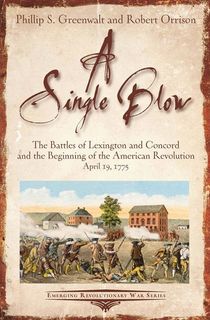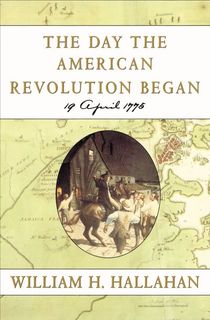On December 16, 1773, members of the Sons of Liberty crept aboard the Dartmouth, a British ship docked in Boston Harbor carrying a massive shipment of tea, brought from China by the East India Company. In an act of rebellion against the Townshend Acts, which placed a form of indirect tax on many imports from abroad, the Sons of Liberty dumped some 342 chests of tea into the harbor in an event which became known as the Boston Tea Party.
The Boston Tea Party was not the first clash between Britain and the American colonists, but it became one of the most significant. British authorities considered the Tea Party an act of treason, and passed the Massachusetts Government Act on May 20, 1774, effectively negating the charter of what was then the Province of Massachusetts Bay and giving its royally appointed governor wide-ranging new powers.
Colonial leaders responded by forming a provisional government of their own and calling for local militias to prepare for hostilities—and hostilities were not long in coming.
One if by land, two if by sea
In February of 1775, the British government declared the Province of Massachusetts to be in a state of rebellion. While British forces controlled Boston, the rest of the colony was largely under the sway of the newly formed Patriot government and, one evening in April, some 700 British Army regulars departed Boston under secret orders to destroy a cache of militia supplies at Concord.
On the eve of what would become the first major battles of the Revolutionary War, word of the British expedition was spread through a variety of now-infamous means. Probably the best known of these is Paul Revere’s immortal “midnight ride,” which was completed by Samuel Prescott, though other riders were dispatched to spread the warning in other directions.
Nearly as famous as Paul Revere’s ride is the signal sent by lanterns hung in the steeple of Boston’s Old North Church—one lantern to warn if the British were approaching by land, two if by sea. This triggered a system of “alarm and muster” that had been developed since the days of the early Indian wars throughout the colonies, in which express riders were supplemented by everything from bells and drums to guns, bonfires, and trumpets to spread the word from town to town, alerting the rebels to muster their militias to meet the British soldiers.
The shot heard round the world
As the sun was coming up in Lexington on April 19, Patriot militia members met British soldiers and exchanged what some consider the first shots of the Revolutionary War. More than half a century later, poet Ralph Waldo Emerson, in his “Concord Hymn,” would describe the first shots fired by the Patriots as “the shot heard round the world”.
Eight militiamen were killed during the first skirmish, and only one British soldier fell. Yet, the tides were about to turn for the embattled Patriots. As the British soldiers broke apart into smaller companies to search for supplies which had, thanks to the intelligence-gathering of the Patriots, already been moved to other locations, local militia continued to pour into the area from surrounding towns.
By approximately 11am, 400 members of the Patriot militia engaged fewer than 100 British soldiers at the North Bridge in Concord, where an obelisk would later be placed in 1837 to commemorate the battle. It was for the placement of this obelisk that Emerson wrote his “Concord Hymn”.
Outnumbered at North Bridge, the British forces fared badly. According to later historical accounts, neither the British regulars nor the colonial militias had actually believed that shooting would commence at the bridge. Reverend Joseph Thaxter wrote in 1824 that, “strict orders were given not to fire unless the British fired first; when they advanced about halfway on the causeway the British fired one gun, a second, a third, and then the whole body; they killed Colonel Davis, of Acton, and a Mr. Hosmer. Our people then fired over one another’s heads, being in a long column, two and two; they killed two and wounded eleven.”
Outnumbered and outmaneuvered, the British fell back, leaving the wounded behind, and began a march from Concord back to Boston, joining other companies of the British regulars along the way.
Chasing the red-coats down the lane
By the time the British began their ordered retreat, they were already outnumbered by the colonial militia, which by now numbered more than 1,000 souls, and throughout the withdrawal back first to Lexington and then to Charlestown, they were harassed by musket fire.
British soldiers would later describe their frustration at the colonial use of the landscape, rather than forming into linear firing lines, as was the common practice in European warfare. “During the whole affair the Rebels attacked us in a very scattered, irregular manner,” wrote Earl Percy, “but with perseverance and resolution, nor did they ever dare to form into any regular body.”
This guerilla style of warfare would ultimately help the colonists to win the Revolutionary War, and has since become immortalized in American myth, as in these lines from Henry Wadsworth Longfellow’s 1861 poem "Paul Revere’s Ride": “Chasing the red-coats down the lane / Then crossing the fields to emerge again / Under the trees at the turn of the road / And only pausing to fire and load.”
The Rubicon crossed
Riding out from Boston, Earl Percy brought a brigade roughly 1,000 strong, including two cannons, to reinforce the retreating British troops. However, in order to make good time, they had brought little in the way of extra ammunition. It has since been said that they marched to the tune of “Yankee Doodle” to taunt those they passed by—within two months, the song would be a popular anthem for colonial forces.
By the time Percy’s forces joined the rest of the British regulars at Lexington, the retreating British column numbered roughly 1,700, which resumed its withdrawal to Boston. Along the way, they are reported to have raided and attacked homes and taverns, though historical accounts of these atrocities were likely exaggerated for propaganda effect. Nevertheless, the withdrawal to Boston was certainly the bloodiest aspect of the battles, with at least 25 militiamen and 40 British regulars slain in Menotomy and Cambridge alone.
On the morning of April 20, only a day after the battles had begun, British forces were back in Boston, but the city was surrounded by a massive army of colonists, numbering more than 15,000. This was the start of the siege of Boston, which would last more than 10 months and kick off the real hostilities of the Revolutionary War.
Surveying the battlefields that day, John Adams, who would later become the second president of the United States, was convinced that open war was now unavoidable. “The Die was cast,” he said, “the Rubicon crossed.”
The Revolutionary War would continue until 1783, when the British government recognized American independence with the signing of the Treaty of Paris. But for many, it began on that April day 250 years ago.
Sources: Concord Museum, National Park Service


